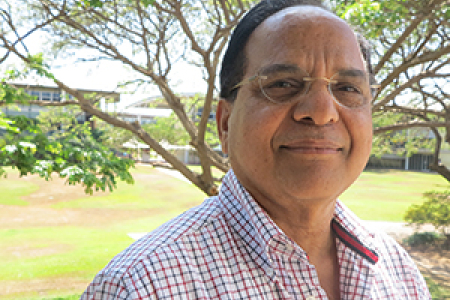Nuclear imaging advances could ‘thwart terrorism and disease’
Research that could prevent terrorism and improve the detection of life-threatening diseases is being highlighted in a new book co-edited by a Charles Darwin University professor.
In his book, “Excitonic and Photonic Processes in Materials”, Physics Professor Jai Singh said improvements to nuclear medical imaging could enhance the detection of cancer, Alzheimer’s and other diseases.
Professor Singh said nuclear medical imaging technology could be improved by advancing radiation detectors, known as “scintillators”.
“Scintillators are a hot topic at the moment. There is a huge demand for them,” Professor Singh said.
“This could have extremely positive impacts on communities worldwide.”
Professor Singh said advancing this technology could also strengthen homeland and border security, with thousands of airports and seaports using scintillators to detect contraband nuclear materials.
He said existing scintillators’ ability to determine accurately the energy of incoming radiation (a process known as “energy resolution”) was weak. Because existing scintillators were unable to detect all energy in incoming radiation, the images and diagnostics they produced were less accurate.
Improving the energy resolution of scintillators used in medical imaging could help practitioners form better diagnoses on imaging results, which could lead to better medical advice provided to patients.
“Considerable cost savings can be obtained by reducing misdiagnosis and inappropriate treatments,” he said.
To improve scintillator technologies, Professor Singh said it was important first to understand their material processes.
“Materials research can improve the quality of life for everyone in the world,” Professor Singh said.
Also included in the book are chapters on material processes in nanotechnology, renewable energy, and organic light-emitting devices.
Professor Singh co-edited the book with United States physics professor at Wake Forest University Richard T. Williams. Other chapter authors include researchers from the UK, Japan, Canada and Hong Kong.
The book has been published by the Springer Series in Materials Science.
